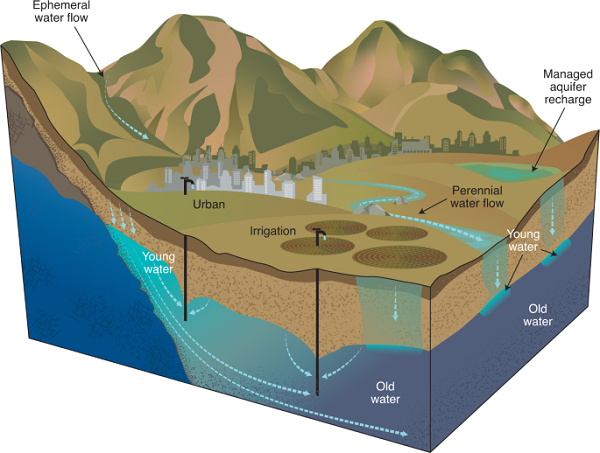Groundwater is a vital resource, serving as a source of drinking water, irrigation, and industrial use.
However, when it comes to construction projects, groundwater can pose significant challenges.
Understanding groundwater control is essential for the successful completion of construction projects, as it directly impacts safety, costs, timelines, and environmental sustainability.
This article explores the importance of groundwater control in construction projects, the methods used to manage it, and the potential consequences of inadequate groundwater management.
The Significance of Groundwater Control
1. Safety Considerations
Groundwater can significantly affect the stability of excavation sites, foundations, and surrounding structures. When groundwater levels fluctuate, they can lead to:
- Soil Erosion and Instability: High groundwater levels can cause soils to lose their cohesion, resulting in landslides or collapses in excavated areas. This instability poses a danger to construction workers and equipment.
- Flooding Risks: Excess groundwater can lead to flooding in construction sites, jeopardizing both worker safety and project integrity. Flooded areas can cause delays and require additional resources for cleanup and repair.
2. Cost Implications
Inadequate control of groundwater can lead to increased costs during construction. These costs may arise from:
- Delays and Downtime: Uncontrolled groundwater can lead to project delays due to emergency measures, cleanup, and remediation efforts. These delays increase labor and equipment costs.
- Infrastructure Damage: Water infiltration can damage structures, requiring costly repairs or reinforcements to ensure safety and stability.
- Treatment and Disposal Costs: If groundwater is contaminated, additional expenses may be incurred for treatment and disposal to comply with environmental regulations.
3. Regulatory Compliance
Construction projects are often subject to strict regulations regarding groundwater management. Failing to comply with these regulations can lead to:
- Fines and Penalties: Non-compliance with groundwater regulations can result in substantial fines or legal action, further inflating project costs.
- Permitting Delays: Regulatory agencies may halt construction until compliance is ensured, extending project timelines and increasing expenses.
4. Environmental Impact
Managing groundwater effectively is crucial for minimizing environmental impacts. Construction activities can lead to:
- Pollution: Disturbing the ground can release pollutants into the groundwater, affecting local ecosystems and drinking water sources.
- Habitat Destruction: Improper groundwater management can lead to changes in hydrology, impacting local flora and fauna.
By implementing effective groundwater control measures, construction projects can minimize their environmental footprint, contributing to sustainable development.
Methods for Groundwater Control
1. Dewatering
Dewatering involves the removal of groundwater from a construction site to create a dry work environment. Methods of dewatering include:
- Pumping: Installing pumps to extract water from the excavation area is one of the most common dewatering methods. This approach is often used in deep excavations where groundwater levels are high.
- Wellpoint Systems: This method uses a series of small wells connected to a vacuum system to lower groundwater levels. Wellpoint systems are ideal for shallow excavations.
2. Grouting
Grouting involves injecting a mixture of cement or other materials into the ground to fill voids and reduce permeability. This technique is often used to:
- Create Barriers: Grouting can form barriers to prevent water from entering the construction site.
- Stabilize Soil: By filling voids and cracks, grouting can stabilize soil, enhancing the structural integrity of the foundation.
3. Sump Pits
Sump pits are excavated areas designed to collect groundwater. They are often used in conjunction with pumps to manage water levels effectively.
- Active Management: Sump pits allow for continuous monitoring and control of groundwater levels, ensuring a stable work environment.
4. Drainage Systems
Implementing proper drainage systems can help manage surface water runoff and prevent groundwater accumulation. Effective drainage systems include:
- French Drains: These are trenches filled with gravel or rock that redirect groundwater away from construction sites.
- Swales: Shallow, vegetated channels that facilitate water movement and improve infiltration.
Consequences of Inadequate Groundwater Management
Failure to implement effective groundwater control measures can have severe repercussions, including:
- Increased Costs: As discussed, inadequate management can lead to significant financial burdens due to delays, repairs, and regulatory fines.
- Safety Hazards: Unsafe working conditions can arise from uncontrolled groundwater, leading to accidents and potential injury or loss of life.
- Legal Issues: Construction companies may face lawsuits from stakeholders, including local residents and environmental organizations, if groundwater management is neglected.
- Environmental Damage: The failure to control groundwater can result in irreversible damage to local ecosystems and drinking water sources.
Conclusion
Understanding the importance of groundwater control in construction projects is critical for ensuring safety, minimizing costs, complying with regulations, and protecting the environment.
Effective groundwater management methods, such as dewatering, grouting, sump pits, and drainage systems, are essential tools for construction professionals.
By prioritizing groundwater control, construction companies can enhance project success, maintain a positive reputation, and contribute to sustainable development in their communities.
Ultimately, addressing groundwater challenges not only benefits construction projects but also plays a vital role in protecting our natural resources for future generations.
Also Read
Building on Slopes: Geotechnical challenges and solutions
Innovative soil stabilization techniques for better foundations: A comprehensive guide

